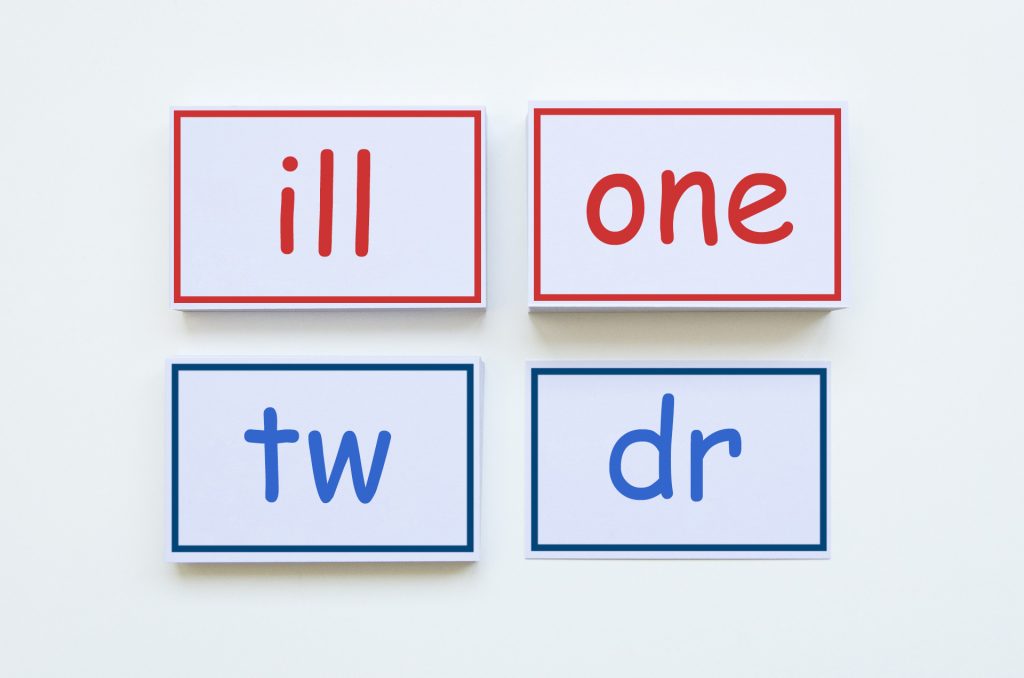The proposal to introduce a phonics check — employed in schools in England towards the end of year one — into Australian schools has created considerable controversy. It has been said it would prove stressful to young children and is unnecessary, because phonics is already taught adequately in most Australian schools as part of the literacy curriculum.
The South Australian government commissioned a trial of the utility of the phonics check last year. The results allay many of the reservations about the check and confirm the need for its introduction.
Many students have very low decoding ability after 18 months at school
The phonics check consists of 40 single words children read aloud to a teacher. There are 20 real words and 20 “pseudo words” — all of which can be read using phonic decoding. The pseudo words are included because they can’t be read from sight memory and are a purer test of phonics ability.
The headline data on student performance shows the majority of children in Reception (the first “foundation year” of school) and year one found the test items difficult. The average number of correctly read items was 11 out of 40 for Reception students and 22 out of 40 for year one.
Given the phonics check is designed for students in year one, it was expected Reception students would score low. This confirms the wisdom of the SA Department of Education and Child Development’s decision to expand the trial from the original design (Reception only) to include year one. But the year one performance was also low relative to their counterparts in England and the expectations of their teachers.
In England, student performance is reported against a “threshold score” of 32 out of 40. For the past two years, 81% of year one students in the UK achieved this score. Only 15% of children in the SA trial achieved at this level.
According to the trial evaluation report, teachers and leaders observed:
students did more poorly than expected, across the board. Numerous respondents reported feeling surprised and disappointed by the results based on students’ known reading abilities and results on the Running Record.
This is a clear indication existing assessments in these SA schools were not providing an accurate measure of students’ decoding abilities.
The distribution of scores in SA was very different to the distribution of scores in England. In SA, student scores were distributed on a bell curve. English student scores are skewed to the right of the distribution. This means most children in SA scored around the middle, whereas most children in England score at the higher end. In many English schools, 100% achieve the threshold score.
Four ways South Australia’s phonics check was different

The phonics check trial in SA employed exactly the same word items used in England in 2016. But there were methodological differences in how the checks were conducted in SA and in England, which may cloud the comparability of the results obtained.
- The sample. In SA, the group of 4,406 students in 56 schools who participated in the trial was from a self-selected sample of schools who volunteered. In England, all schools are required to administer the check annually. So, the SA sample may not be truly representative of the state as a whole, let alone of students Australia-wide.
- The font. Teachers raised the issue that the font used in the check was different from the standard font used in SA schools. But by the end of year one, children will have encountered many different fonts in books and elsewhere. It’s unlikely this will have been a major factor influencing performance on the check.
- Timing. In England, the check is given to students about a month before the end of year one (after nearly two years of initial instruction). But in the SA trial, the check was given earlier, in term three. The SA students had about a term less to learn letter sound correspondences, and this needs to be kept in mind.
- The “stopping rule”. More significant was the decision to advise teachers to discontinue testing once a child had made three consecutive errors. This stopping rule has the potential to deflate scores on the check, because students who had been stopped might have gone on to answer few more questions correctly. The evaluation report also found the stopping rule was not consistently applied. It’s unlikely many children failing three items in succession would be able to achieve the threshold score of 32 items out of 40.
A stop rule is not part of the standard conditions used in England, although teachers do stop children if they are struggling. As many as 41% have been found to do this.
Students liked it
Teachers and leaders in the trial reported all students responded positively, including struggling readers, and they were engaged and interested. There were no reports of anxiety or stress for students. Teachers “universally” commented that students “loved the one-to-one time with the teacher”.

Teachers and school leaders were overwhelmingly positive
The feedback from teachers and school leaders was encouraging and positive about all aspects of the administration of the check and the information it provided, including:
- the sufficiency of training and support materials
- the ease of administration
- the length and duration of the check for young students
- the engagement and effort of the students, and
- the usefulness of the data it yielded on student reading abilities, for the purposes of guiding instruction and for identifying and supporting students who “may otherwise be slipping under the radar”.
The phonics check was reported to be a “good eye-opener for teachers”, and widely seen as complementing rather than duplicating existing assessments.
What should happen next?
In spite of the differences in methodology compared with the phonics check in England, it’s unlikely their combined effect could account for such a difference in performance between the two. SA’s results suggest there is little room for complacency about the state of phonics teaching in SA.
Almost all teachers in the trial said they taught phonics using either synthetic or analytic methods, reflecting the claim that Australian teachers already teach phonics. But there was no information to verify that phonics teaching is systematic or explicit, and these results clearly suggest they don’t teach it well enough.
The SA trial of the year one phonics check has been an important initiative. The evaluation report will be a valuable guide to changes that need to be made for a state-wide implementation.
Even more significantly, the trial has provided strong support for implementation of the year one phonics check across Australia. Or, at the very least, for other states and territories to conduct similar trials. It supports the findings of the expert panel for the Australian government, and has validated the arguments of advocates that the phonics check gives teachers vital information about decoding skills not gained from other systemic assessments, and is neither burdensome for teachers nor stressful for students.
Source: The Conversation – Jennifer Buckingham and Kevin Wheldall
Jennifer Buckingham
Senior Research Fellow, The Centre for Independent Studies; Associate Investigator, ARC Centre of Excellence in Cognition and its Disorders, Macquarie University
Kevin Wheldall
Emeritus Professor of Education, Macquarie University



















Phonics is the first thing that should be taught at school. It should be taught before any other subject is taught. Sight reading with out phonics first is doomed for failure. Phonics was taught well 50 years ago. Then consistantly changed over the years. until it was done away with and replaced with sight reading.(John Howard) It failed so many kids who were pushed through the system and given calculaters and spell check as a replacement for phonics, spelling and calculating. This resulted in the dumbing down of our education system and the kids. Once recognised as a failure phonics was bought back into the education system. No where near the standards it once was. Children were expected to know how to read by the time they started school. Teachers expected parents to do the initial training. Many children were left behind as both parents were expected to work. Resulting in children teaching children because teachers had too many students in each class and no time. So dual teaching came into practice but it failed the kids too. Yes! The phonics standards need to be raised and bought back into schools and taught properly by trained and educated teachers at the very beginning of first year of school and every school and student in the country should be tested at the end of the first year. This should be priority number one before any other subjects are taught with the exception of maths. Reading out allowed should be common practice as it assists with confidence and comprehension. However reading can’t exist properly without a complete understanding of phonics. Site reading can only be fully accomplished successfully if a student has the full understanding and comprehension of phonics.
The Australian education system has failed so many students and lost its way. The basic structure of education has been lost and become a political football and really needs an overhall and restructure. As far as dyslexia is concerned teachers and the education system still refuse to recognize this as problem to students who are trying to learn. Students who are being victimised for falling behind, using avoidace techniques, not doing homework, being angry and fighting with teachers. Agression by parents and teachers failing to recognise this problem which is so difficult for the student. Who so desperately needs recognition and assistance via audio lessons. These students can have high IQ if taught properly.
The problem only gets a lot more worse once the child hits high school. It’s amazing to see that there are high school students who have no idea that vowels make different sounds and that spelling and reading is based on this premise. We really should have teachers qualified in high school to identify these students and intervene before they become a “ineffective casualty” due to school negligence and the lack of effective teaching of reading and spelling. Some people say “you don’t need to know how to spell when we have technology” but they very rarely think that often if you can spell something correctly as a child you may not know how to read it. Its time to think outside the box and give our the students in our care what they need.